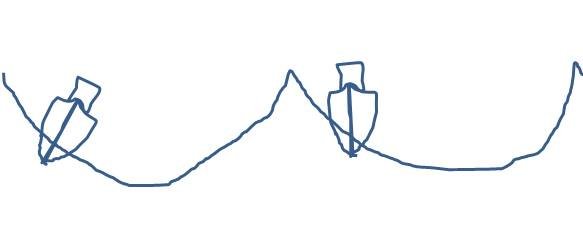There’s no question as regards survivability size matters and loa is a gross measure of same. Still, unlike tank testing or computer analysis in the real world what I posted appears validated over and over. Read the experience recorded in the various storms involving races or rallies. LWL is perhaps a valid guage of resistance to pitchpoling but not rolling. As you said need to look at the total boat not just one feature.
Still don't agree with that. There are numerous surveys and studies of actual capsizes, and by FAR the most significant factor is LOA. It is very difficult to assess the sea state after the fact in these studies, but even in races with high participation and several capsizes, again the main determining factor is LOA. The physics says that dynamic resistance to roll goes up at a high power of LOA. So a 45' boat has approximately 3.5x the roll moment of inertia and can withstand 3.5x the roll impulse compared to a 35' boat. Wave induces capsizes are not a hydrostatic event, they are a dynamic acceleration event. There is a reason that most offshore racing rules require higher AVS with reduced LOA.
"Tripping" over a deep keel seems to be not much of a factor as the boat isn't moving sideways relative to the local wave face. In any case, it can happen only if the boat is abeam to the waves, this used to be practiced as a storm tactic (called "lying ahull") but is now considered poor practice as it presents the least stability to the sea. You might aslo get abeam following a broach, which has a separate set of dynamics.
Open 60 racing boats and the classes that followed (these are specifically designed for operation in the Southern Ocean) have requirements for AVS, but also must demonstrate the ability to right from a full capsize with the crew trapped inside. The boat is rolled over in the water to full inversion and the crew inside must right it with a time limit.
Almost every normally proportioned boat will remain upside down if capsized, until some force - perhaps another large wave - rights it again. Boats with a high AVS, and particularly with a very asymmetric Gz curve may still capsize, but there is great likelihood that the same sea state which capsized it will fairly quickly right it again. Of course this only occurs if it doesn't sink first. Most motorboats have numerous large hull penetrations and large vulnerable windows, and will sink very quickly even if knocked down to 90 deg.
Here is an example of a stability or Gz curve (it is my own sailboat). The AVS is about 130 deg. The area under the curve between 0 and 130 deg of heel represents the energy required to reach the neutral stability point - the point at which it is as likely to capsize as right itself. The area under the curve between 130 and 180 represents the energy required to reach the neutral point from at rest upside down in order to right. In this case about 6x the energy is required to roll over compared to righting. On a typical trawler hull, the curve would be much more symmetric, and the ratio of areas much closer to 1.


